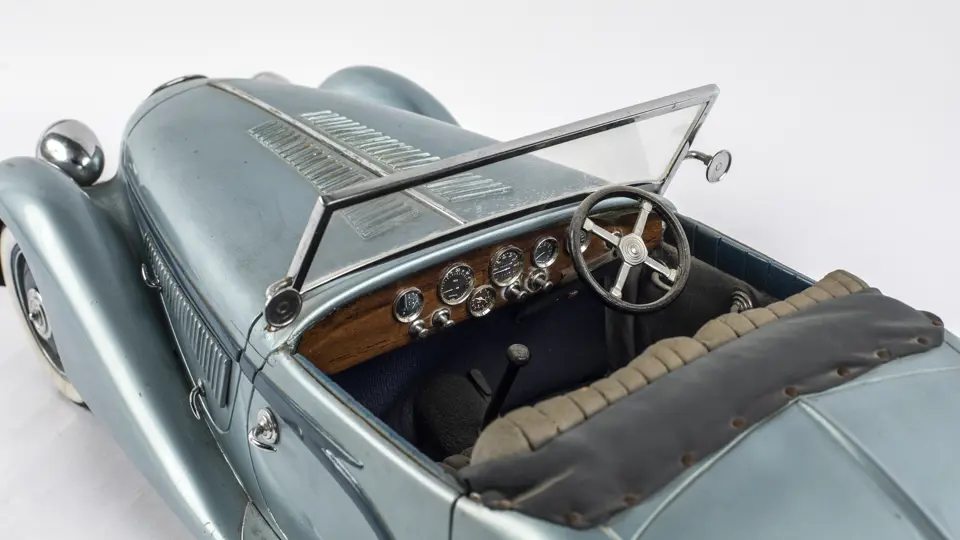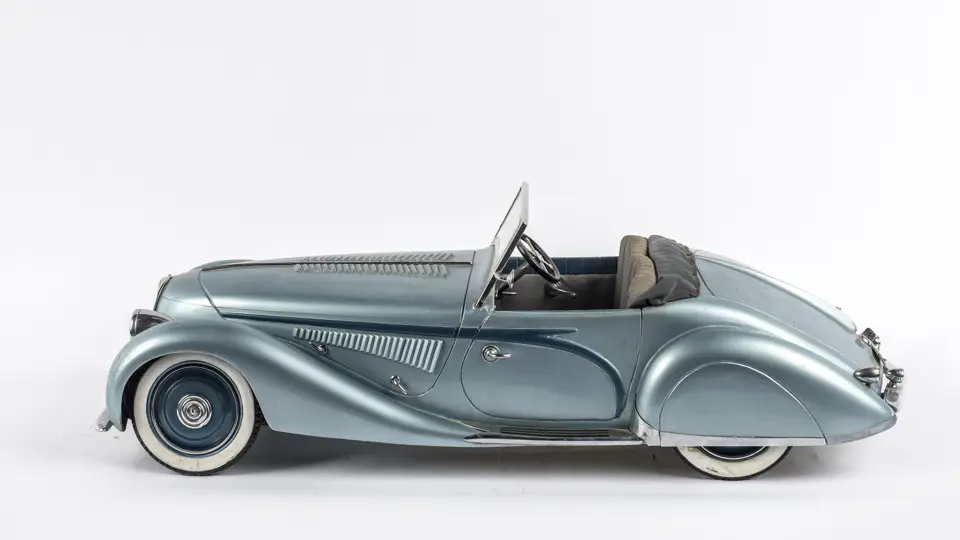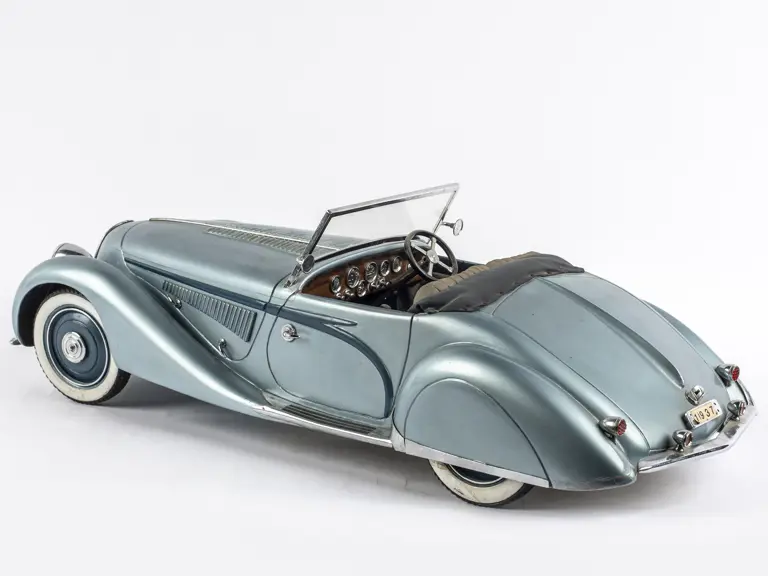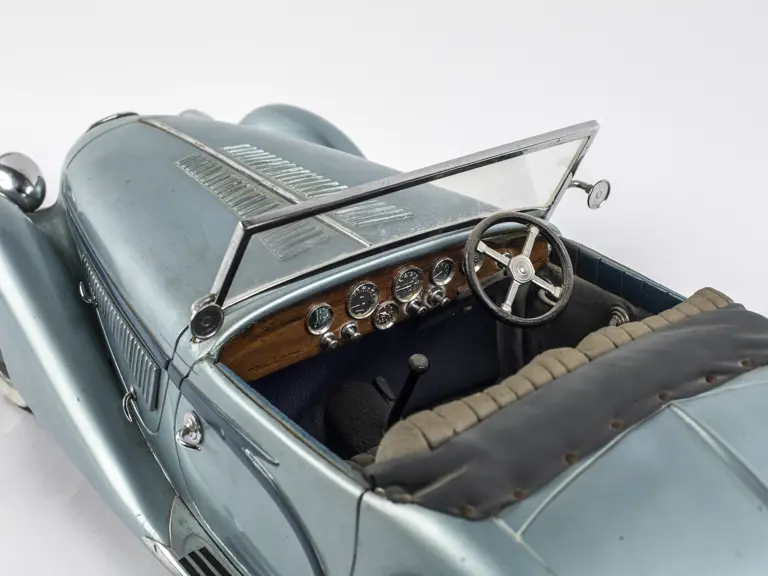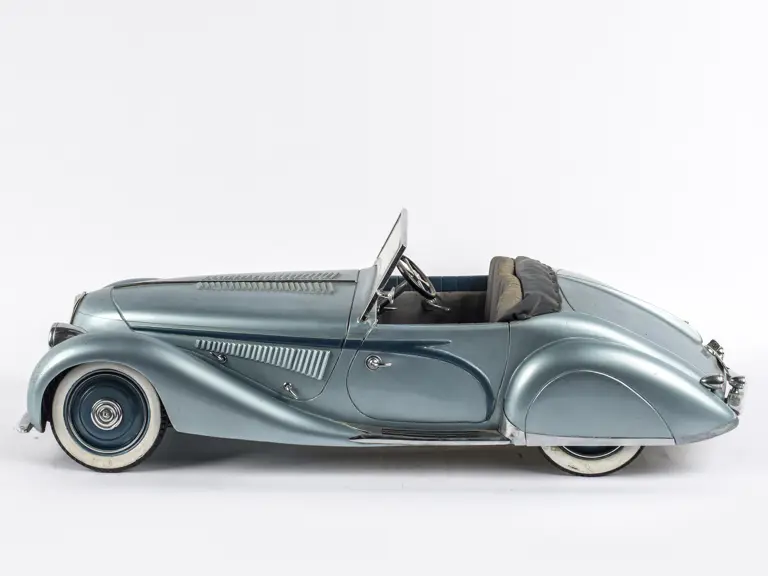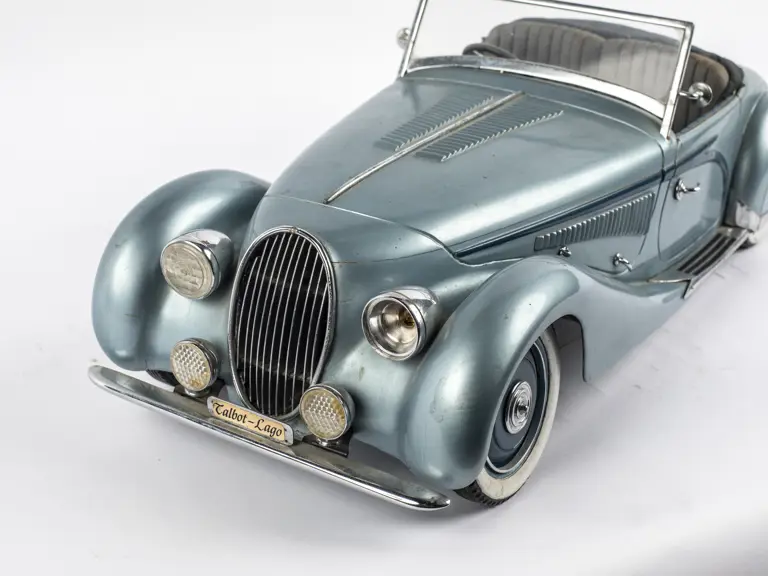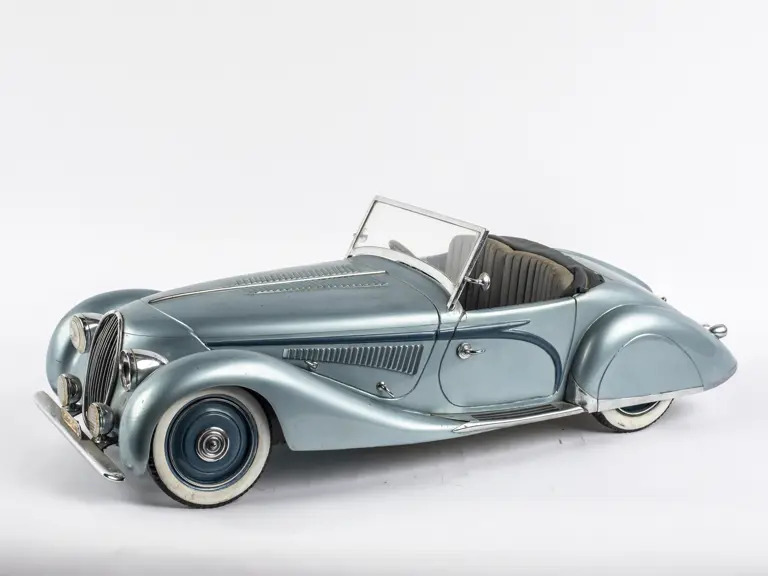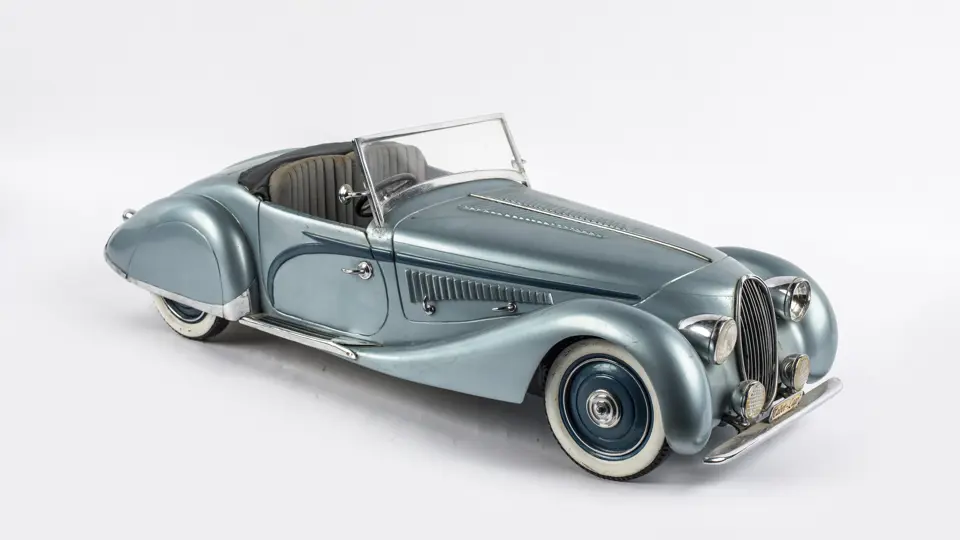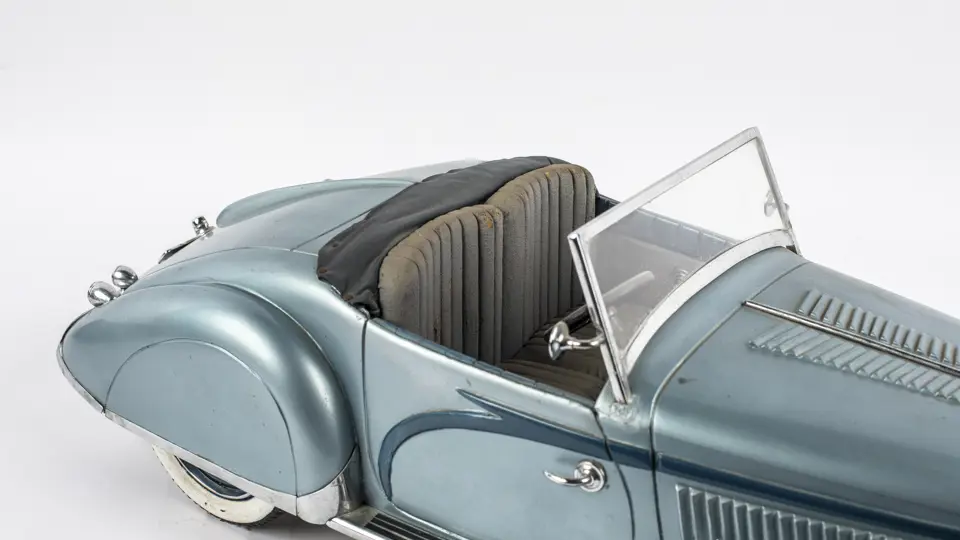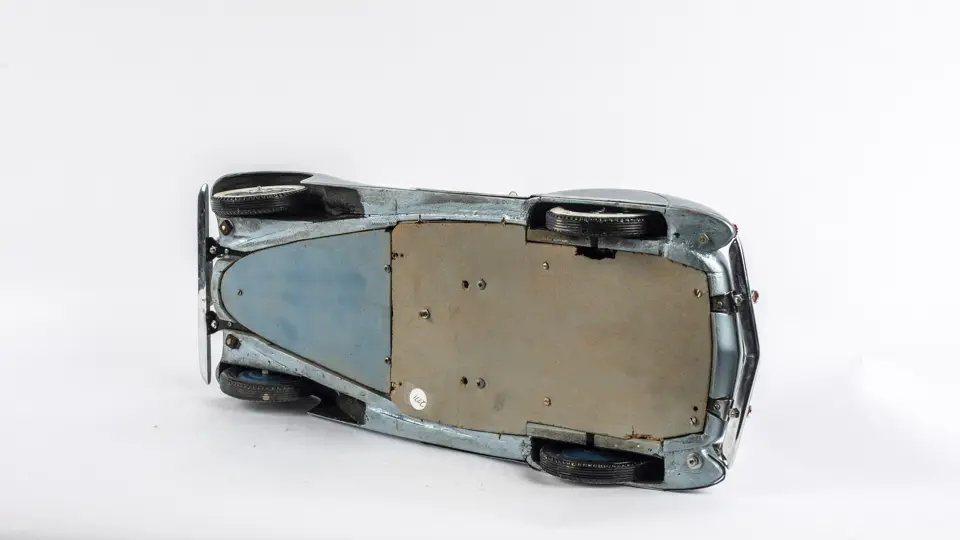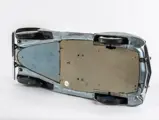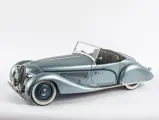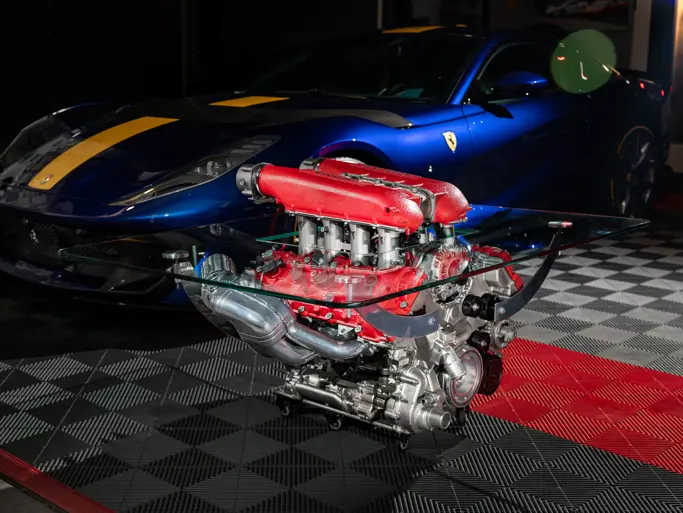 | Haltom City, Texas
| Haltom City, Texas
Talbot-Lago
Painted wood with chromed trim
Executed in 1937
23 in., long
After Sunbeam-Talbot-Darracq’s financial collapse in 1935, Anthony Lago bought the French company and renamed it Talbot-Lago, which remained until the line was discontinued in 1959. Lago’s engine modifications turned the popular, but aging, six-cylinder engine into a higher-performance 4-liter, bringing the company back to the top of the ranks of European race champions.
The highly stylized T150 body designs were created for the firm by the leading body stylists of the day, including Figoni et Falaschi. Figoni is credited with the creation of the classic teardrop shape for which Talbot-Lago became so well known. Figoni et Falaschi altered this highly stylized, expressionistic design with the company’s 1938 models, reducing the drop area between the fenders and the hood, eliminating the front wheel skirts (in all but one custom example that is known to still exist), raising the head-lights, and abbreviating the long sweep of the tail.
This 23-inch-long representation of the 1938 Talbot-Lago T150-C cabriolet appears to be a manufacturer’s production design model. It is hand-carved from a single piece of wood, with the body seams etched into their appropriate locations, and not made from separate fitted pieces. As such, there is no articulation of the doors, trunk, or hood sections. Only the cabin’s handbrake moves; even the steering wheel and the wooden tires are fixed in position. The chrome pieces are made from chrome plated castings that have been mounted to the body. Fitted sections of board seal off the model’s undercarriage. The right rear wheel is missing the special finial that mounts through the hubcap and to the axle bolt. The right headlamp lens is also missing. The model appears flawless in all other regards, right down to the original paper license plate that reads “1937,” the year that the model was made for the following year’s design. This exceptional model is an extremely valuable rarity from one of the most desirable of all the classic European sports car designers.

